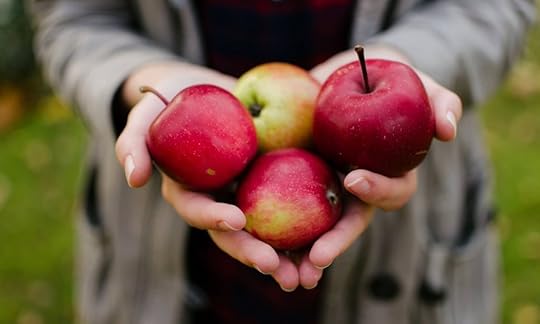5 Things I Learned Going Low-Waste for 40 Days
Note: This is a guest post by Gabriella Hileman.

Every year, I make it a point to spend 40 days eliminating something from my life. Everything from gossip to coffee has gone under the microscope over the years.
Earlier this year, I was lugging a particularly large assortment of trash bags out to my apartment complex’s dumpster. A few cardboard boxes writhed themselves loose from the mass I was carrying and, getting caught in the wind, left me awkwardly running after and pouncing on them. I hit some kind of breaking point.
I resolutely decided to attempt the low-waste lifestyle, chasing promises of lighter trash bags and a lighter conscience.
Here are some of the realizations it brought me.
1. It’s hard. This sounds whiny, I know, but contemporary Western society is built on the cornerstones of easy portability and extended shelf-life, and that means lots and lots of plastic.
In fact, even some of the zero-waste movement’s most fervent followers have conceded that they are unable to be low-waste all the time. So don’t beat yourself up if you fall short.
2. Finding your people is crucial. Here’s what I mean by that: the biggest challenge I faced in reducing plastic and non-recyclables coming into my home was purchasing food. Buying loose vegetables and staples from bulk bins became the easiest way to avoid bringing home cardboard boxes and plastic bags.
While many stores will let you bring canvas bags for the checkout line, it’s much more difficult to find a store that will allow you to bring your own containers for bulk bin purchases or meat and cheese from the deli. Thankfully, I was able to call around and finally found a health food store that was alright with this.
Engaging with your local community more closely will be your best bet at finding ways to eat well. Farmers’ markets are often a good start.
3. You’ll cook. A lot. During this experiment, since the lion’s share of the carbohydrates I brought home were bought in dry bulk, like rice and flour, I found myself cooking big batches to eat over a few days in lieu of packaged meals. Suddenly, I was interested in perfecting the recipe for wholesome sandwich bread. I also ate many more fruits and vegetables than before.
4. You’ll get creative. Many low-waste sites try to sell the idea that you need to buy this stainless steel food container or that package of beeswax wraps to do low-waste properly. While I’m sure those items can help if you go low-waste long term, I found them unnecessary while starting out, and was able to repurpose things I already had instead. My existing tupperware containers were perfectly fine.
I found myself cutting up old flour sack towels and sewing them into napkins, saving glass yogurt jars to make candles with beeswax from the farmer’s market, and digging out old, neglected yarn scraps for new knitting projects.
And you know what? Many of these projects turned out totally charming and taught me new crafting skills.
5. You will buy less in general. My Amazon cart filled only with cobwebs during this experience. Often not buying something at all was easier than finding a low-waste alternative, and that’s okay.
A low-waste experiment is a great way to get out of a food rut, encourage creativity, and ultimately challenge our relationships with the things we already own.
While I didn’t stick with the low-waste lifestyle after the 40 days were up, it did give me increased insight into how quickly our culture disposes of our existing possessions in favor of the newest model. Sometimes all an old shirt needs to feel new again is a few cool elbow patches.
I appreciated and felt much more in tune with older methods of cooking that predate the standard American diet. There was a kind of peace and intentionality in reconnecting with food that way.
And, as promised, I didn’t have to take out the trash nearly as often.
***
Gabriella Hileman is an artist and the creative producer at Becoming Minimalist. She directs and produces the videos on the Becoming Minimalist Youtube channel.




